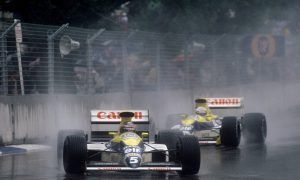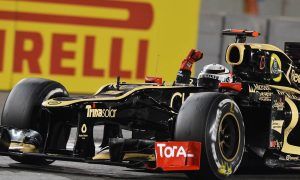
© F1i
REORGANIZATION AT RED BULL
One wondered how the engineers of Red Bull had installed the radiators under the bodywork of the RB14 to manage to refine the sidepods as much as they did. The team evolved the configuration it had used last year, and which was already inspired by the set-up at Toro Rosso since 2016. Simply put, the cooling is divided into three areas: the right sidepod, the left sipdepod and the top of the bodywork.
On the RB14, as on all Red Bulls since 2014, each sidepod houses an intercooler for the compressor (bottom, blue arrow), and a small air/water radiator (top, white arrow).
The specificity of the 2018 car is noticeable at the level of the roll-hoop air intake, which feeds all the other intercoolers.
It is subdivided horizontally into three separate intakes. The upper duct feeds the radiator needed to cool the ERS and mounted at the rear of the engine block (yellow arrow). The middle duct supplies fresh air to the engine (green arrow). The bottom intake, finally, splits into two separate ducts, left and right, which feed the two oil radiators mounted on each side of the engine (red arrow).
Compared to the RB13, these three radiators are positioned higher, which is not ideal for the centre of gravity and complicates the access to the engine. The Milton Keynes engineers believe these drawbacks can be offset by the benefits provided in aerodynamics.







